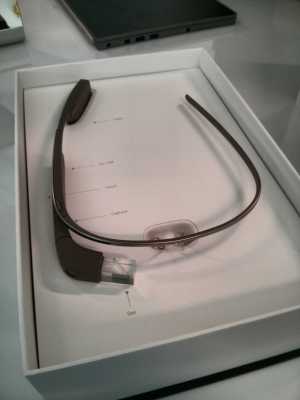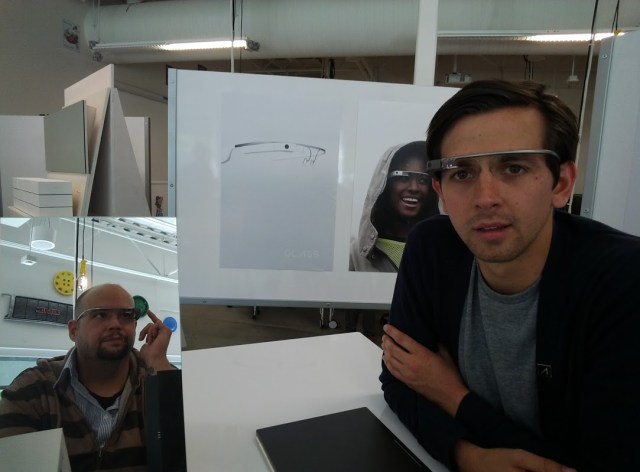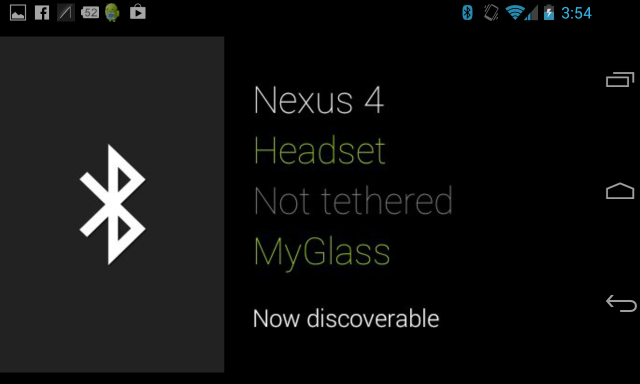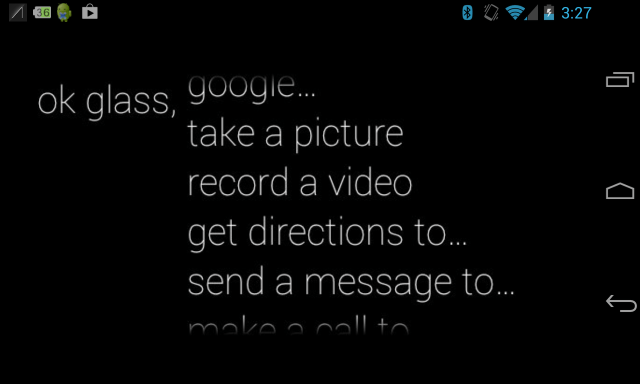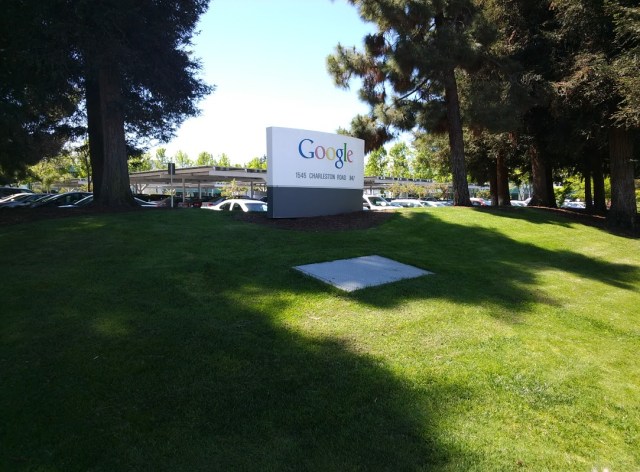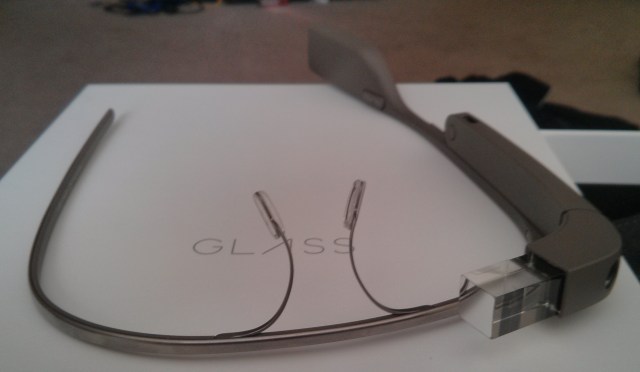As we shared yesterday, the process to actually pay for the Glass Explorer Edition was quite simple. The next step in the process is picking up your device at either the Mountain View, Los Angeles or New York City Google Campus. Of course, you can opt to have them shipped to you if you’re not in one of those areas, but what’s the fun in that?
I picked up my Google Glass today in Mountain View and was told only that I would receive a bit of a walkthrough and proper fitting. I want to warn you, this isn’t a review, there won’t be any unboxing videos, you can find the technical specs here and there will be no pass or fail grade on this first iteration of Google Glass. If you buy into the potential for the device, and, more importantly the platform, then you know that this will be a true exploration into what Google has come up with here.
Some will see this device as a fad, something that isn’t really “necessary” in today’s world, and others will see this as the beginning of an adventure for users, developers and Google, of course. I tend to lean towards the adventure side, as it’s not fully known what impact Glass will have on society, your day-to-day activities, or the future of technology and hardware.
The setup
I arrived at the Googleplex and a few members of the Glass team greeted me. It’s been almost a year since Google’s last I/O conference where 2,000 developers signed up to be a part of the Glass Explorer program, and this is naturally the day that they’ve been waiting for.
When I sat down to unbox my Glass, I was shown the proper way that they should sit on my face. The glass itself, where the screen is projected, should sit above your right eye and not in front of it. It’s easy to mess around with the nose pads to get the right fit. The second step is to pair your Glass with your device, using the MyGlass app that recently shipped. Since Glass pairs to your phone through Bluetooth, the device is pretty much useless until that’s done.
You log into the app using your consumer, not business, Gmail account, and then you’re off to the races once you’ve paired:
Something to note, all of these screenshots are coming from the handy “screencast” tool within the MyGlass app. It shows everything that you’re seeing on Glass. You’re paired, account is connected, Wi-Fi or mobile network is chosen, and you’re ready to use Glass.
As you swipe your way through some of the screens on the touchpad with your finger, you’ll notice Google Now cards (if you choose to turn them on), a settings screen, and of course, the all-important command screen that pops up after you say the magic phrase “Ok Glass.”
With these voice commands, you can Google things, find directions, send someone a message shoot a video or take a picture. There’s also a button on the top of Glass that lets you snap photos and shoot video as well. The audio, which comes out right by your ear, is crisp and not too loud.
The Glass team tells me that looking at the screen takes some time to get used to. Some of the folks who work at Google say it took them up to a week to be able to focus on the screen properly. Let’s be honest, looking up and to the right isn’t a natural movement for our eyes. I’ve found that as I’ve worn them longer, I can glance up pretty quickly and see what I need to see and go back to what I was doing.
One trick is to use the screencast function of the app so that you can understand fully where each screen goes and what it does.
What Glass is and isn’t
Let’s start with what Glass isn’t. Glass isn’t a replacement for your cell phone, since you have to pair the device with the one you have for cellular functionality. It’s not a device for watching movies or YouTube videos and it’s not going to replace your computer. You won’t be able to read full search results on the tiny screen, but you’ll be able to get to really relevant information quickly.
What Glass seems to be, in the few hours that I’ve spent with it, is a device that picks up some of the things you do throughout your day and makes that information more easily accessible. Currently, the only built-in integration for a third-party service is Path.
For example, how many times a day do you pick up your phone to check the time or to see if you have any missed calls or text messages? I couldn’t count the times that I’ve wasted that arm motion, in the sense that it has taken attention away from things around me. Every single time you take your phone out, you’re telling the people that are around you that you have no interest in interacting with them for at least 30 seconds while you dive into your phone. Now, am I saying that having a screen above your eye is any less socially awkward? No. But it lets you access the same information quicker without having to stop what you’re doing.
If you look at Glass in its existing state, it’s quite impressive that all of this was fit into a tiny package that sits on your face. Will I get weird stares for a while when I’m out wearing them? Probably. Do I care? Not really. But I do care how it affects others, and that’s something that nobody will be able to talk about for sure until these things are in the wild for a few weeks.
Now mind you, this is the Explorer Edition of Glass, and it comes with the barest bones of “apps.” The real magic is going to be what developers start building on the platform.
What Glass could be
This is where things get really interesting. As we covered last week, there are already investors that are chomping at the bit to put money into developers who are building apps on top of Glass. The possibilities are actually quite endless, starting from potential uses in hospitals for doctors to a new way for teachers to interact with their students.
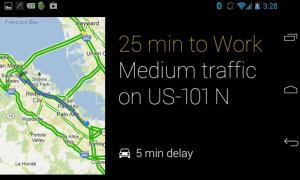 As far as how we interact with the world around us, being able to take pictures from our own vantage point, without setting up a shot for perfect light or shade, is something that has yet to be uncovered. Glass can do that. Being able to join a Google+ Hangout and talk to your friends with nothing more than a device that sits on your nose is pretty cool, too.
As far as how we interact with the world around us, being able to take pictures from our own vantage point, without setting up a shot for perfect light or shade, is something that has yet to be uncovered. Glass can do that. Being able to join a Google+ Hangout and talk to your friends with nothing more than a device that sits on your nose is pretty cool, too.
It all goes back to the developers, though. They have the minds to push Glass forward as not just a geeky novelty, but as a platform to enhance our lives. I’m not going to sugarcoat it — this product has a lot of bumpy roads ahead of it. We have to assume that there are developers who can come up with big ideas, that consumers are ready for it and whether it can be at a price point that middle-America can afford. In its current developer-only state, it’s not that hard to grasp how to use it once you get past having something new on your face.
This is only a first step, and it’s going to be an interesting ride. Not only can I not wait to build my hands-free recipe app, I’m looking forward to speaking with developers who are forward-thinking enough to see Glass for what it is — not a futuristic gadget, but something that can help us explore the world in a new way. It’s going to take time, though. I mean, even my dog thinks it’s weird:
If you’re a developer who is working on, thinking about or are interested in building Glass apps, feel free to reach out to me, as we tell the story of the platform together.
